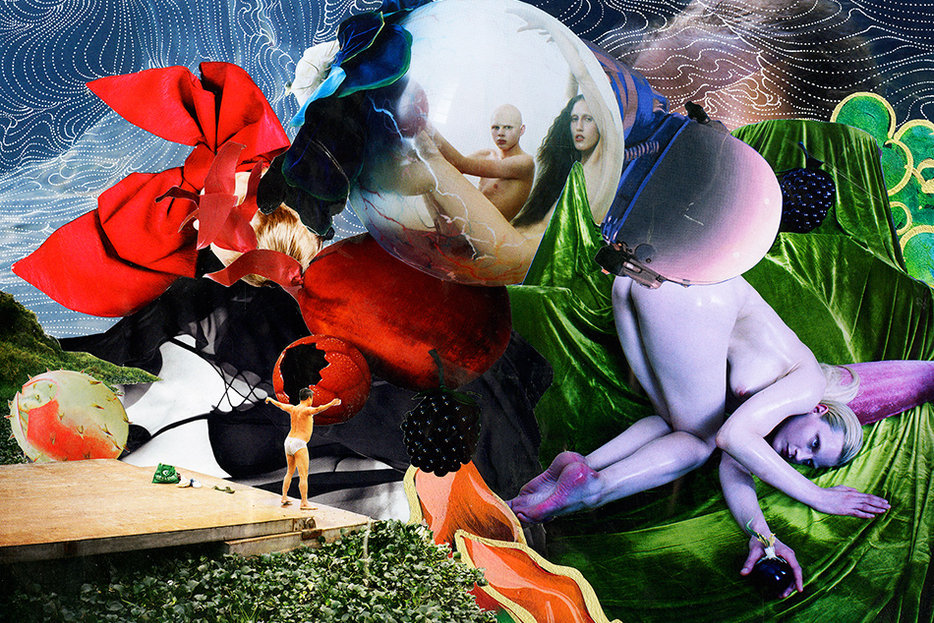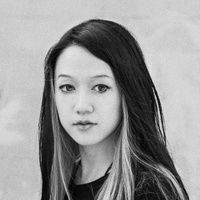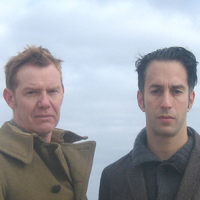On learning to trust your intuition
Prelude
Conversation
On learning to trust your intuition
Writer Sarah Gerard discusses the lengths you must go to in order to truly understand your subject matter, the ways art-making is like psychoanalysis, and how all the best stories are already out there waiting to be discovered.
As told to Mark Sussman, 2094 words.
Tags: Art, Writing, Process, Focus, Inspiration, Adversity.
For some of the essays in Sunshine State, you volunteered with the homeless and volunteered to work at a bird sanctuary. Is getting your hands in the work important to you as a writer?
It would have felt wrong to me if I was a writer who just showed up to the church and was objectifying a room full of homeless people. There are certain situations where you can’t be an outsider. In order to write about your subject, you need to get close to it. In order to write about your subject well, you have to come to understand your subject, which requires, in the first place, that you start from a position of humility and openness to the subject. There’s an element of trust there. Some of it was just being a smart person, a smart writer. But some of it is knowing that this is something I should be doing as a human being anyway. It’s an activity that I believe in.
Same with the bird sanctuary. I really just wanted to go learn about birds and see how the bird sanctuary ran. I wanted to get close to nature. That was a situation, too, where I would never have gotten the information that I was able to get if I had remained an outsider, if I had only showed up for my scheduled shifts. If I wasn’t just hanging around the bird hospital cleaning shit out of cages and overhearing conversations.
How much do you have to believe in those kinds of activities in order to write about them?
My parents really like believing in things. They’ve had the same book club for 25 years. They’re still vegetarian today, which they’ve been since I was four, but they’re not health conscious and they eat a lot of dairy. Our beliefs form grooves in our lives that are hard to deviate from after a while. I guess one of the questions I wanted to ask was, when does belief cross over into action? To what extent can you have this action without necessarily believing? What is the general relation between believing and acting? For my parents, being vegetarian is a force of habit. I’m sure they care about animals as much as the next person, but they’re not die-hard vegans or anything. They read ingredients, but they don’t think very much about the impact their food has and how complicit they are in the meat and dairy industry. So to what extent can we actually say that they believe in their vegetarianism?

Collage, 2016. Courtesy Sarah Gerard
Even if you keep doing something, you may lose touch with the original, principled reason for doing it.
Yeah, habits. I’m very good with forming habits. Historically, in retrospect, I’ve noticed I’m good at forming habits, and not necessarily good ones. Lately, I’ve been thinking about forming habits, like intentionally forming habits.
Is writing like that for you, part of a habit? Do you need to hit a word count every day or spend this many hours sitting in front of your computer?
Oh no. Writing for me is like very elegant shitting. It’s involuntary. It just comes out of me. It’s how I get through the day. I don’t always put words on paper. Or I don’t always do the kind of writing I want to do. Or I don’t always put words down the way I want to, in the shape I want to, I don’t finish as much polished writing as I would like to right now with my schedule, so a lot of what I’m writing now is lesson plans. I don’t always read as much as I would like to or have time to. But I always keep multiple notebooks. I’m always planning for the next time that I can do the kind of writing I want to do. Always looking for that time. It’s just very mixed up with everything else in my life.
There are so many animals in Sunshine State, especially in the final piece, “Before.” What was it like to go to a hypnotist to prepare for writing it?
My original intention with that essay was to remember every animal I’ve ever seen. Which is, of course, impossible, because I haven’t attached a memory to every animal I’ve ever seen. I’ve only attached memories to the significant ones. So that was the first thing the hypnotist explained to me. And we talked about how memories are stored in clusters, so I wouldn’t remember every animal in chronological order. They would probably come to me in bursts, which they did. So I went to her office, and we went on this journey to a bottom of a lake.
And then for days and weeks afterwards, I was writing down every animal that would come to me, and they would come to me in these bursts, and I would have to pull over and write them down or dictate them into my phone or something. Then I loaded them all into a Google spreadsheet and assigned rough dates to them and tried to describe them as well as I could, and then I just rearranged the Google spreadsheet so it was in reverse chronological order, and then I just began at the top and worked my way down. But it was hard. I rewrote it a bunch of times to get the rhythm and the cadence.
The interesting thing about that piece, and this was accidental, is that there are certain things you just can’t remember. There were certain animals I just couldn’t remember, especially from when I was really young, so you see less of them in the piece as time speeds up because there’s less I could remember. And the rhythm changes too, and that was accidental too. The way I had to structure those last stanzas too had this sing-song quality. [Writing it] was almost magical. That’s how it’s stored in my memory, so that it had to be arranged on the page that way, so that it automatically took on this sing-song quality that was unintentional. It just happened.

Collage, 2016. Courtesy Sarah Gerard
There’s this interplay between this thing you’re trying to describe and the medium you’re trying to describe it with.
The subject dictates the form. I tell my writing students, the stories you’re telling already have a structure, and it’s your job to discover it. You could sit down and say you want to write a mystery or something, but probably you have that feeling because there’s a story you want to tell already. The story knows what it wants to be. It’s like the essay “Sunshine State.” I didn’t know I was writing a mystery, it just became that because that was the story that needed to be told there, and then it took on the structure of a mystery.
Do you think stories are things that exist empirically in the world?
Yes. I think they’re already somewhere in the world waiting to be discovered and told. They’re like independent, autonomous beings. I’m a medium. [laughs] Yeah. My editor’s partner is a neuroscientist. He can separate out an individual neuron, or a series of neurons, and make them do something. He can send an impulse through them. If he stimulates them in the same way each time, he gets the same reaction. So he has this very input-output view of the brain. I don’t have that. I think of my brain like a pasta machine.
Is this another shitting metaphor?
Yeah, exactly. It is kind of like that. It’s part discovery. I think a writer should always have a sense of discovery in her work. But I also have to be creative with my tools as an artist. What tools do I have at my disposal that I can use to shape this. This is a sculpting metaphor. How can I chisel this story out of this raw piece of marble? Which, just like in sculpting marble, is much less about the artist’s vision than it is about the material you’re working with. How does this artist’s vision come out of the material? The artist has a vision, but you have to be creative in the moment and adapt to the situation, adapt to the set of circumstances at the same time as you express yourself through them.

Collage, 2017. Courtesy Sarah Gerard
So you don’t see it as about imposing order over disordered material?
No, definitely not. The material has a relationship to itself already. Like in [the essay “Mother-Father-God”], my research consisted of a lot of materials that came from my parents, personal materials. But also these texts I had to seek out. Hard-to-find texts about marginal religious movements I had to hunt down, which already had a relationship to my parents’ materials. These materials of my parents already existed in the world as finished, but they were in relation to these academic texts that my parents were reading at the time, so they already have this natural relationship. So there’s no way I can impose an order on that. It already has an order. And then I have no control over the stories my parents are going to tell me in the interviews. So once I have that material, the raw material of the recording, I have to discover how it fits in, like solving a puzzle. How does this fit into the story, what do I take from this interview and what do I leave out that’s not relevant? And then for the material that I do take, how do I frame this in a way that expresses this interviewee’s ideas? Which ideas am I interested in? And then, how can I still express my own opinion, if I have an opinion?
It sounds like collaging, which you also do. Is there a similar principle at work between writing and collaging?
Yeah, so here’s how it works when I make a collage. I’m making one now for my column. I might begin with a particular magazine. Like in my last column, I wrote about my ex-husband. After we got married, we put our vows in a bottle and threw them off the boardwalk in Malibu. I wrote that into the piece, and then as I was flipping through magazines, I happened to come across a picture of a map that was rolled up and stuck into the top of a bottle. So I took that bottle and that became the centerpiece of the collage. I wasn’t looking for a bottle, but when I saw one, it was almost like it was looking for me, or that I was looking for it without knowing I was looking for it. In a way, making a collage is like psychoanalysis. You have an image system already inside you. I could even start out with something as vague as a color.
Flipping through a magazine, I’ll happen to notice that I’m passing by a lot of pages with pictures of water on them. That might be because there are more pictures of water in this magazine than other magazines. But it might just be because I’m noticing them more. I’m noticing water because that’s what I’m drawn to right now. There’s a kind of sixth sense about it. There’s a lot of intuition. But intuition is a sense just like hearing or smelling. Your intuition is reacting to something in your environment and showing you something you need to see.
Sarah Gerard recommends:
-
It’s a goal of mine to learn about criminal law, because I’m writing about a murder. I recently read Janet Malcolm’s book Iphigenia in Forest Hills. And I recently read Maggie Nelson’s book Jane: a Murder.
-
For the teaching that I’m doing, I’ve been reading a lot of essays, so I’ve been really into Graywolf as a press that publishes smart essays, especially by women. And especially by women who are outside the mainstream somehow, like Maggie Nelson and Claudia Rankine. So I’m into venues that give voice to otherwise marginalized voices.
-
I’ve been listening to a lot of hip-hop lately. This artist Noname, I like her a lot. And Kendrick Lamar.
- Name
- Sarah Gerard
- Vocation
- Writer, Artist
- Fact
- Sarah Gerard is the author of the essay collection Sunshine State, the novel Binary Star, a finalist for the Los Angeles Times first fiction prize, and two chapbooks, most recently BFF. Her short stories, essays, interviews, and criticism have appeared in the New York Times, VICE, Granta, BOMB Magazine, and other journals, as well as anthologies. She’s been supported by fellowships and residencies from Yaddo, Tin House, PlatteForum, and Ucross. She writes a monthly column for Hazlitt and teaches writing in New York City.
.jpg)
Some Things
Pagination



